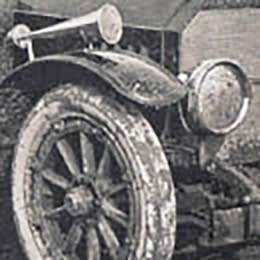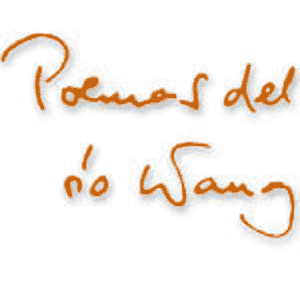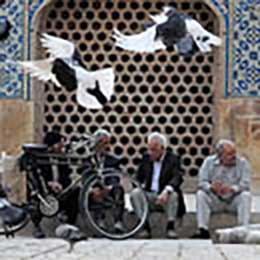 Christmas fiddler, Belgrad, 1919, from here
Christmas fiddler, Belgrad, 1919, from here Cretan fiddler Papadakis and lauto player Koutzourelis
Cretan fiddler Papadakis and lauto player Koutzourelis Indian classical fiddler Kala Ramnath, twenty years ago
Indian classical fiddler Kala Ramnath, twenty years ago Visiting card of Czech violinist and composer Jan Kubelík (1880-1940) at a young age. The
Visiting card of Czech violinist and composer Jan Kubelík (1880-1940) at a young age. The inscription, written in Vienna in September 1919 is in Hungarian: “Forgive me for
my laziness. Tomorrow I take an examination. Thanks! Bye, Aurel.” This
was therefore not written by Kubelík, although he also spoke well
in Hungarian, and his wife, Countess Marianne Csáky-Széll
was also Hungarian. All their eight children became
musicians, the five daughters violinists.
 Photo montage by Ruth Zachary on her great-grandfather, fiddler and violin maker Alfred
Photo montage by Ruth Zachary on her great-grandfather, fiddler and violin maker Alfred Bowers, hero of the American Civil War, from here
 John Flynn, “the Bard of Erin”, Wisconsin (*1840), visiting card, from here
John Flynn, “the Bard of Erin”, Wisconsin (*1840), visiting card, from hereBulat Okudzhava: The Musician
| Булат Окуджава: Музыкант Музыкант играл на скрипке, я в глаза ему глядел, Я не то чтоб любопытствовал – я по небу летел. Я не то чтобы от скуки, я надеялся понять, Как умеют эти руки эти звуки извлекать Из какой-то деревяшки, из каких-то грубых жил, Из какой-то там фантазии, которой он служил. А еще ведь надо в душу к нам проникнуть и поджечь. А чего с ней церемониться, чего ее беречь. Счастлив дом, где пенье скрипки наставляет нас на путь. И вселяет в нас надежду; остальное - как-нибудь. Счастлив инструмент, прижатый к угловатому плечу, По чьему благословению я по небу лечу. Счастлив тот, чей путь недолог, пальцы злы, смычок остер Музыкант, соорудивший из души моей костер. А душа, уж это точно, ежели обожжена, Справедливей, милосерднее и праведней она. | Bulat Okudzhava: Musician A musician played on violin I looked into his eyes. Not that I was curious – I was flying to the skies. Not that I was bored – I just hoped to understand: how are able these hands to call forth these sounds from some kind of wood from some kind of rough bowels from some kind of fantasy which he served – because there must be still something else that penetrates into our soul that celebrates there with her and that saves her. Happy is the house where the violin’s song teaches us the way and gives us hope – the rest will go somehow. Happy is the instrument, pressed to the bony shoulder whose blessing makes it that I am flying to the skies. Happy is he, who directly, with nervous fingers and a sharp bow, as a musician, is able to make a bonfire in my soul. And the soul, that is for sure, once burned in this fire, will be forever cleaner more righteous and merciful. |
 André Kertész: The blind musician. Abony, Hungary, 1921. “The blind musician. Look at
André Kertész: The blind musician. Abony, Hungary, 1921. “The blind musician. Look at the expression of his face. It was absolutely fantastic. If he had been born in Berlin,
London or Paris, he might have become a first-rate musician.”
(André Kertész: Kertész on Kertész)
Among the pictures of one-way there is only one of which she has not disclosed the title, author and year. This is a photo by André Kertész, made exactly ninety years ago, only a few miles from where I live. This is the picture about which Andrzej Stasiuk writes in his Jadąc do Babadag (On the way to Babadag, 2004, my translation):
Probably everything I wrote in my life can be traced back to this photo. 1921, a Hungarian little town, Abony, seven kilometers west of Szolnok. A blind violinist is crossing the street and playing. A teenage boy is leading him, with a peaked cap on his head. The musician wears a trampled shoe. With his right foot he is just stepping over the trail of an iron-wheeled cart. The street has no pavement. There is drought. The boy’s feet are not muddy, the narrow wheel track is flat, it hardly penetrates into the ground. It slightly turns to the right and gets lost in the blurred background of the picture. Along the street, a wooden fence and a part of a house: the sky is reflected in the window. Slightly further away, a white chapel. Some trees are standing behind the fence. The musician closes his eyes. He is just going and playing to himself and to the invisible space around him. Apart from the two wanderers, there is only a two-three years old child on the street. He turns toward them, but looks somewhere farther, beyond the edge of the picture, as if behind the tramps there was something more interesting happening than on the picture. The weather is gloomy: neither the objects nor the people do not raise a shadow. On the right arm of the violinist (yes, he is left-handed!) * a rod is hanging, while on that of his companion some kind of a small horse-blanket. They are only a few steps away from the edge of the picture. Soon they will disappear and the music will stop. Only the little boy, the street and the track will be left in the picture.
This photo has been haunting me for four years. Wherever I travel, I am looking for the three-dimensional and color version of it, and sometimes I feel as if finding it. So it was in Podolin, in the alleys of Lőcse/Levoča, in the white-hot Gönc, where I was looking for the railway station which, as it turned out, was an empty, dilapidated building and no train was to leave until evening. So it was in the empty platform of Vilmány, in the middle of endless fields, on the market place of Deljatin, where old women were selling tobacco, and in Tiszaborkút/Kvásy when the train left and there was no living creature around, although there were houses lined up side by side. So it was in Aknaszlatina/Solotvina in the middle of the motionless mine shafts covered with salty dust, and in Dukla, while a never ending, biting wind was blowing from the mountain pass. Everywhere André Kertész’s photo of 1921 was projected onto the transparent screen of the space as if time stopped once and forever in that moment, and so the present would be an error, a joke or a betrayal, as if my presence on these places were an anachronism and a scandal, for I came from the future, but not for this I am wiser, only more terrified. I am hypnotized by the space of this picture, and the purpose of all my travels is to find the secret passage leading into the interior of this image.
This photo has been haunting me for four years. Wherever I travel, I am looking for the three-dimensional and color version of it, and sometimes I feel as if finding it. So it was in Podolin, in the alleys of Lőcse/Levoča, in the white-hot Gönc, where I was looking for the railway station which, as it turned out, was an empty, dilapidated building and no train was to leave until evening. So it was in the empty platform of Vilmány, in the middle of endless fields, on the market place of Deljatin, where old women were selling tobacco, and in Tiszaborkút/Kvásy when the train left and there was no living creature around, although there were houses lined up side by side. So it was in Aknaszlatina/Solotvina in the middle of the motionless mine shafts covered with salty dust, and in Dukla, while a never ending, biting wind was blowing from the mountain pass. Everywhere André Kertész’s photo of 1921 was projected onto the transparent screen of the space as if time stopped once and forever in that moment, and so the present would be an error, a joke or a betrayal, as if my presence on these places were an anachronism and a scandal, for I came from the future, but not for this I am wiser, only more terrified. I am hypnotized by the space of this picture, and the purpose of all my travels is to find the secret passage leading into the interior of this image.































































































Add comment